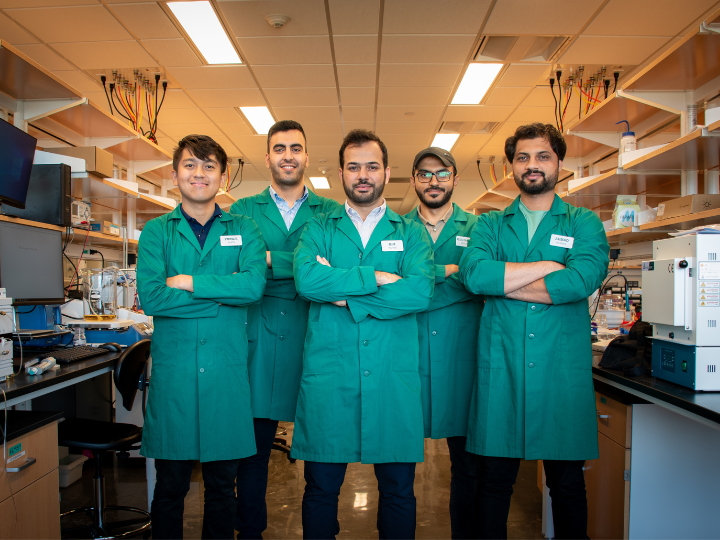New Method for Reducing Carbon Dioxide in the Environment
New Method for Reducing Carbon Dioxide in the Environment AZoCleantech


Reducing Carbon Dioxide in the Environment: A Report on Negative Emissions Technologies
Scientists worldwide are urgently working to develop strategies and technologies to combat climate change. One potential solution being explored by a team of scientists at the University of Houston is negative emissions technologies (NETs), which aim to reduce the amount of carbon dioxide in the environment.

The specific NET being developed is called electrochemical direct ocean capture (eDOC), and it focuses on aiding the ocean in removing carbon dioxide. Mim Rahimi, Assistant Professor of Environmental Engineering at the University of Houston’s Cullen College of Engineering, is leading the research. The concept is described in detail in a study published in the journal Energy & Environmental Science.
“Electrochemical direct ocean capture amplifies the ocean’s ability to absorb carbon, sidestepping the expensive sorption process typical in many current strategies. The promise of eDOC is undeniable, but scaling it, optimizing costs and achieving peak efficiency remain challenges we are actively addressing.”
– Mim Rahimi, Assistant Professor, Environmental Engineering, Cullen College of Engineering, University of Houston
The majority of carbon dioxide emitted by the Earth is stored in the atmosphere and terrestrial biosphere, but a significant portion is found in the oceans. The world’s five oceans contain 38,000 gigatons of CO2, according to World Ocean Review.
Furthermore, oceans absorb 25% of all CO2 emissions and trap 90% of the excess heat caused by those emissions, making them a crucial buffer against climate change, according to United Nations climate scientists.
Rahimi and his team are developing electrochemical tubes to extract dissolved inorganic carbon from synthetic seawater, with funding of $250,000 from the US Department of Energy. The University of Houston’s Center for Carbon Management in Energy provided initial project funding.
Current efforts to remove carbon dioxide from the ocean often involve complex techniques like electrolysis, which aim to convert dissolved inorganic carbon into gas, magnesium, or calcium carbonates. However, these methods are energy-intensive and expensive due to the use of rare and costly elements like platinum and membranes that frequently clog.
The researchers’ alternative technique eliminates the need for expensive membranes. Instead, it utilizes an inexpensive and environmentally friendly electrode material to alter the acidity of seawater. This technology not only promises to be more cost-effective but also significantly reduces the environmental impact of traditional carbon removal activities.
“While membrane-based systems showed promise, they come with challenges. We’re using electricity instead of thermal-based methods, and our current trajectory emphasizes systems without membranes for heightened efficiency.”
– Prince Aleta, Doctoral Student, University of Houston
One of the key advantages of this invention is its adaptability and scalability. The solution can easily be integrated into existing on-shore infrastructure, such as desalination facilities, as well as offshore locations like oil rigs.
Rahimi concludes, “While eDOC won’t single-handedly turn the tide on climate change, it enriches our mitigation toolkit. In this global challenge, every innovative approach becomes invaluable.”
Journal Reference:
Aleta, P., et al. (2023) Direct Ocean Capture: The Emergence of Electrochemical Processes for Oceanic Carbon Removal. Energy & Environmental Science. doi:10.1039/D3EE01471A
Source: https://www.uh.edu/
SDGs, Targets, and Indicators
-
SDG 13: Climate Action
- Target 13.2: Integrate climate change measures into national policies, strategies, and planning.
- Target 13.3: Improve education, awareness-raising, and human and institutional capacity on climate change mitigation, adaptation, impact reduction, and early warning.
- Target 13.1: Strengthen resilience and adaptive capacity to climate-related hazards and natural disasters in all countries.
The article discusses the development of negative emissions technologies (NETs) to combat climate change by reducing carbon dioxide in the environment. This directly addresses SDG 13, which aims to take urgent action to combat climate change and its impacts. The targets mentioned in the article are relevant to the development of these technologies and the integration of climate change measures into policies and strategies.
-
SDG 14: Life Below Water
- Target 14.3: Minimize and address the impacts of ocean acidification.
- Target 14.5: By 2020, conserve at least 10% of coastal and marine areas.
- Target 14.7: By 2030, increase the economic benefits to small island developing states and least developed countries from the sustainable use of marine resources.
The article highlights the importance of oceans in absorbing carbon dioxide emissions and acting as a critical buffer against climate change. This aligns with SDG 14, which focuses on the conservation and sustainable use of oceans, seas, and marine resources. The targets mentioned in the article relate to minimizing the impacts of ocean acidification and conserving coastal and marine areas.
-
SDG 7: Affordable and Clean Energy
- Target 7.2: Increase substantially the share of renewable energy in the global energy mix.
- Target 7.3: Double the global rate of improvement in energy efficiency.
- Target 7.a: By 2030, enhance international cooperation to facilitate access to clean energy research and technology.
The article mentions the development of electrochemical tubes to extract dissolved inorganic carbon from seawater, which can contribute to clean energy solutions. This relates to SDG 7, which aims to ensure access to affordable, reliable, sustainable, and modern energy for all. The targets mentioned in the article focus on increasing the share of renewable energy and improving energy efficiency.
Table: SDGs, Targets, and Indicators
| SDGs | Targets | Indicators |
|---|---|---|
| SDG 13: Climate Action |
|
No specific indicators mentioned in the article. |
| SDG 14: Life Below Water |
|
No specific indicators mentioned in the article. |
| SDG 7: Affordable and Clean Energy |
|
No specific indicators mentioned in the article. |
Behold! This splendid article springs forth from the wellspring of knowledge, shaped by a wondrous proprietary AI technology that delved into a vast ocean of data, illuminating the path towards the Sustainable Development Goals. Remember that all rights are reserved by SDG Investors LLC, empowering us to champion progress together.
Source: azocleantech.com

Join us, as fellow seekers of change, on a transformative journey at https://sdgtalks.ai/welcome, where you can become a member and actively contribute to shaping a brighter future.







